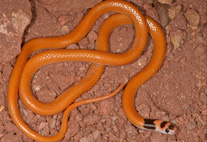Abstract
Species of Devadatta from Borneo are studied using both morphological and molecular methods. As well as D. podolestoides Laidlaw, four new species are recognised from the island: D. aran spec. nov. (holotype ♂, from Pulong Tau National Park, Miri division, Sarawak, Malaysia, deposited in RMNH), D. clavicauda spec. nov. (holotype ♂, from Bukit Mina, Bukit Mina Wildlife Corridor, Sarawak Planted Forest Project, Bintulu division, Sarawak, Malaysia, deposited in RMNH), D. somoh spec. nov. (holotype ♂, from the Sungai Kahei area, Ulu Balui, Kapit division, Sarawak, Malaysia, deposited in RMNH) and D. tanduk spec. nov. (holotype ♂, from Poring Hot Springs, Kinabalu National Park, West Coast division, Sabah, Malaysia, deposited in RMNH). The Philippine taxon D. basilanensis Laidlaw is considered a good species rather than a subspecies of D. podolestoides. The Bornean species plus D. basilanensis are provisionally considered to form a species group, the podolestoides-group, within Devadatta. The species of the podolestoides-group are so similar in morphology and colouration that they are close to truly cryptic species. Two species appear to exhibit character displacement where their ranges overlap with other Devadatta species. A molecular analysis using four markers (COI, 16S, ITS and 28S) is presented. This analysis includes specimens of all species from the podolestoides-group and two Devadatta species from mainland Asia.

